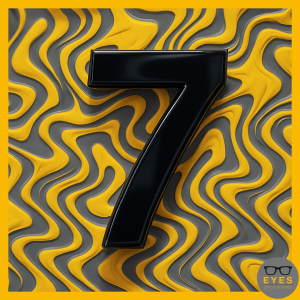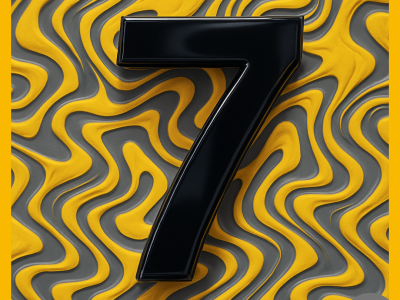Seven years.
Is it only that long we hear you cry…!
Whether you’ve only just realised that EYES on St Albans is that yellow glasses shop next to Fade to Black or you’ve been with us since the beginning, it is 7 years since Jez first opened the doors to eyewear and eyecare of excellence.
If this isn’t an opportunity to get some tenuous 7 related eye facts into our article this week, we don’t know what is. So here goes…
- In some cultures, 7 is a lucky number – and eyes are often linked with luck or fate. Think:
- “The evil eye” talisman (often blue, often…you guessed it, circular and eye-like)
- Seven years’ bad luck if you break a mirror – because the mirror is said to reflect your soul…through your eyes!
Jez reckons it’s his lucky number too – so we asked him why…
- 7 on his back
Back in the days when his knees weren’t so dodgy, Jez was frequently found on the rugby pitch. With number 7 on his back as flanker for Verulam School, and occasionally, OVs.
Possibly also the number of shirts with glasses on that Jez owns.
- It all started with Leeds #7
It wasn’t just rugby the young Mr Levy was inspired by. In the (ahem) early 70’s, he was a big fan of Peter Lorimer who played number 7 for Leeds Football Club. Which considering Jez is a local lad makes us question why he chose to support Leeds… but on we go
- Seven muscles move the eye
Each eye is controlled by seven extraocular muscles (if you count the accessory levator muscle):
- 4 rectus muscles (superior, inferior, medial, lateral)
- 2 oblique muscles (superior and inferior)
- 1 levator palpebrae superioris (raises the eyelid)
So, if (when?!) your eyes roll at a bad pun… seven muscles made it happen!
- Seven Colours of the Rainbow
Your eyes perceive the visible light spectrum in seven classic colours:
Red, Orange, Yellow, Green, Blue, Indigo, Violet
Those with colour vision deficiency can’t always see all of these which is where EnChroma glasses can help. We’ve been helping people see more colours for all of our 7 years too
- Seven layers in in the eye (Retina edition)
The retina (the light-sensitive layer at the back of the eye) has seven major layers, each playing a role in visual processing.
With OCT scanning as standard (and at no extra cost), we’ve been examining the health of retinas since we opened – helping our fabulous optometrists ensure your eyes are as healthy as they can be.
- Seven is the key to optical illusions
There are 7 classic types of optical illusions, often used in psychology and vision science:
- Literal illusions
- Physiological illusions
- Cognitive illusions
- Ambiguous images
- Distorting illusions
- Paradox illusions
- Fictional illusions
Your eyes can be tricked in seven sneaky ways – just like our 7 graphic is proving!
So here’s to the next 7 years… bringing you spex, hugs and rock ’n’ roll on the sunny side of the Quadrant!



 EYES on Seeing The Change.
EYES on Seeing The Change.
Leave a Reply